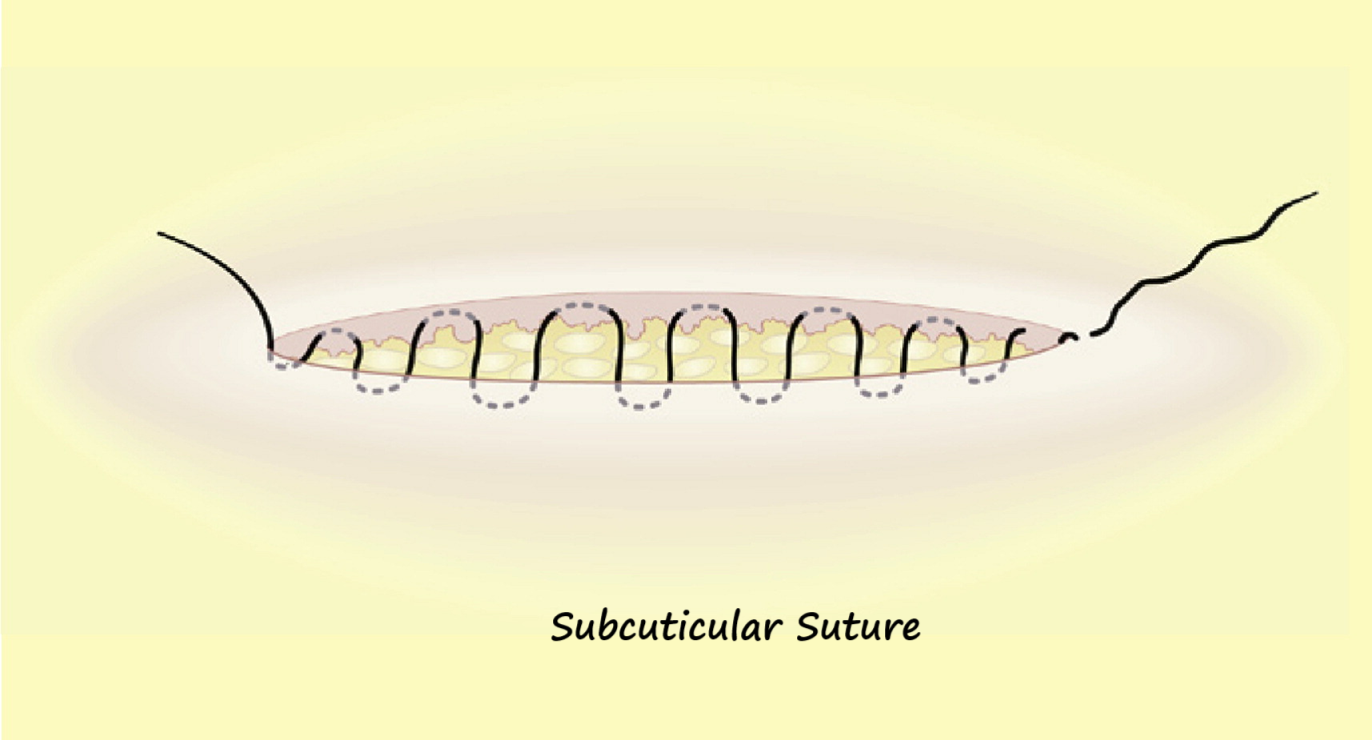In the world of surgical techniques, the subcuticular suture stands out as a refined method for closing wounds with precision and minimal scarring. This technique, often used in cosmetic and plastic surgery, is a testament to the marriage of skill and artistry in medicine. Whether you’re a medical professional or simply curious about advanced wound closure methods, this blog post will explore the ins and outs of the subcuticular suture, its benefits, and how it’s performed.
What is a Subcuticular Suture?
A subcuticular suture is a type of continuous suture placed just below the epidermis (the outermost layer of skin) in the dermal layer. Unlike traditional interrupted sutures, which create visible “stitches” on the skin’s surface, the subcuticular suture runs horizontally within the skin, leaving no external marks. This technique is particularly favored for its ability to produce a cosmetically appealing result with minimal scarring.
When is a Subcuticular Suture Used?
The subcuticular suture is commonly employed in situations where aesthetics and wound strength are equally important. Some typical applications include:
- Cosmetic Surgery: Facelifts, breast augmentations, and tummy tucks often utilize this technique to ensure minimal visible scarring.
- Laceration Repair: For wounds on highly visible areas like the face, neck, or hands.
- Cesarean Sections: To create a neat, barely noticeable scar.
- Orthopedic Surgery: For closing incisions in areas where mobility and appearance are key.
Advantages of the Subcuticular Suture
- Cosmetic Superiority: The absence of external stitches reduces the risk of “track marks” or cross-hatching, resulting in a smoother, more natural-looking scar.
- Reduced Scarring: By distributing tension evenly along the wound, the subcuticular suture minimizes the risk of hypertrophic or keloid scarring.
- No Need for Suture Removal: When absorbable sutures are used, there’s no need for a follow-up appointment to remove stitches.
- Enhanced Patient Comfort: The technique reduces irritation and discomfort compared to traditional sutures, as the knots are buried beneath the skin.
How is a Subcuticular Suture Performed?
The subcuticular suture technique requires precision and practice. Here’s a step-by-step overview of how it’s typically done:
- Preparation: The wound edges are cleaned and aligned to ensure proper healing.
- Entry Point: The needle is inserted into the dermis at one end of the wound, just below the epidermis.
- Continuous Stitching: The suture is run horizontally through the dermal layer, alternating between the two sides of the wound in a zigzag pattern.
- Exit Point: The suture is tied off or secured at the other end of the wound, often using an absorbable material.
- Finishing Touches: The wound is dressed, and the patient is given aftercare instructions.
Challenges and Considerations
While the subcuticular suture offers many benefits, it’s not without its challenges:
- Skill Requirement: This technique demands a high level of skill and experience to execute properly.
- Tension Management: Uneven tension can lead to wound dehiscence (reopening) or poor cosmetic outcomes.
- Material Choice: The type of suture material (absorbable vs. non-absorbable) must be carefully selected based on the wound location and patient needs.
Aftercare for Subcuticular Sutures
Proper aftercare is crucial for optimal healing. Patients should:
- Keep the wound clean and dry.
- Avoid strenuous activities that could strain the incision site.
- Follow their healthcare provider’s instructions regarding dressing changes and follow-up appointments.
Conclusion
The subcuticular suture is a testament to the advancements in surgical techniques that prioritize both function and aesthetics. By minimizing scarring and enhancing patient comfort, this method has become a gold standard in many surgical fields. For medical professionals, mastering the subcuticular suture is a valuable skill that can significantly improve patient outcomes. For patients, it’s a reassuring option that combines science and artistry for a seamless recovery.
Whether you’re on the operating table or the other side of the scalpel, the subcuticular suture represents the best of modern medicine: innovation, precision, and care.
Disclaimer: This blog post is for informational purposes only and should not be considered medical advice. Always consult a qualified healthcare professional for diagnosis and treatment options.



Leave a Reply